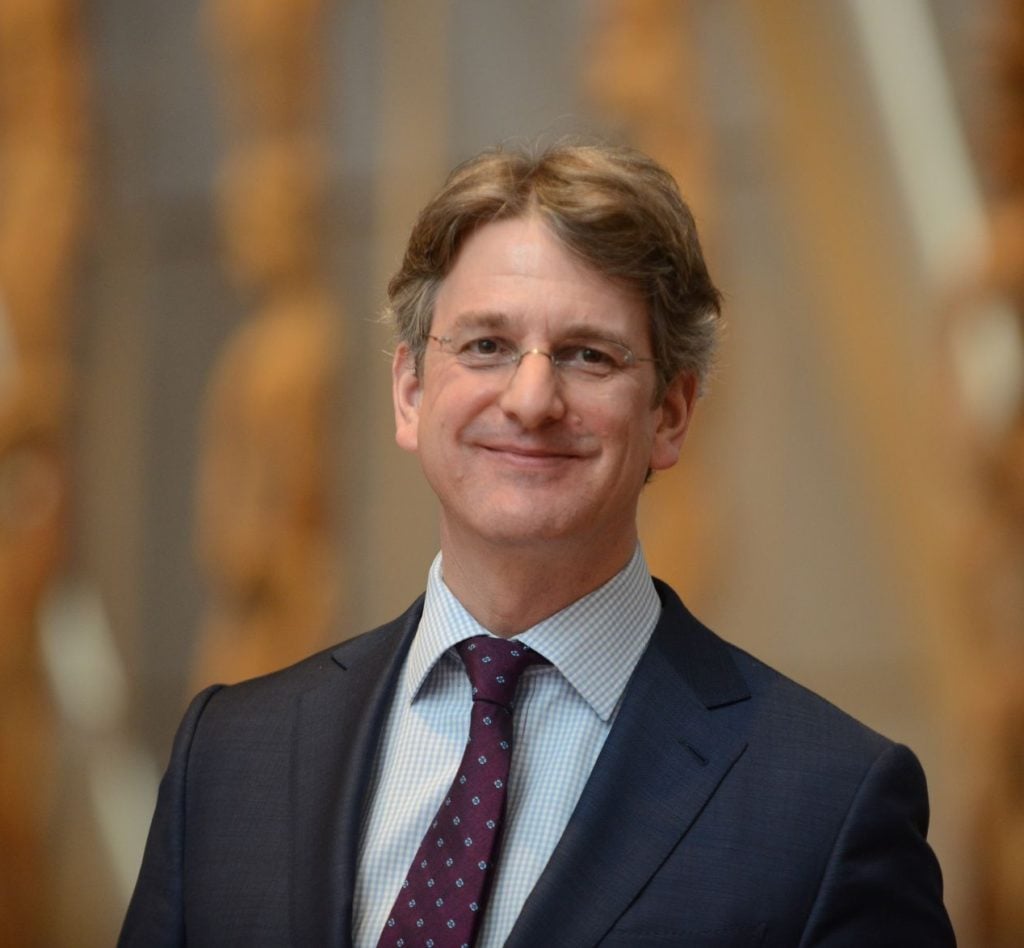Art World
Former Met Director Thomas Campbell Will Now Head the Fine Art Museums of San Francisco—Replacing His Successor at the Met
He will fill the post left vacant at the august San Francisco institution by Max Hollein.

He will fill the post left vacant at the august San Francisco institution by Max Hollein.

Julia Halperin

Call it a particularly high-minded version of the old switcheroo. On Tuesday evening, the board of the Fine Arts Museums of San Francisco announced its selection of Thomas P. Campbell, the former director of the Metropolitan Museum of Art in New York, as its new director. He replaces Max Hollein, who recently replaced him at the Met.
The Cambridge-born Campbell served as the Met’s director for more than eight years. He spent most of his career at the New York institution, which he joined in 1995. Before taking the top job, he specialized in European tapestries, earning the nickname “Tapestry Tom.”
Selected after a six-month search, Campbell will begin his new role at the helm of the de Young Museum and the Legion of Honor on November 1. He joins an institution that has increased its international profile considerably in recent years, but has also developed a reputation as a bit of a revolving door for high-profile museum executives moving onto even bigger jobs. (In addition to Hollein, its previous star director Colin Bailey left in 2015 to lead the Morgan Library and Museum.)
During Campbell’s tenure, the Met saw its attendance increase considerably, expanded its activities online, notably increased its engagement with contemporary art, and transformed the Whitney Museum’s former Upper East Side home into a (somewhat short-lived) satellite known as the Met Breuer that was dedicated to the presentation of the old and new side-by-side. But his chapter at the museum also attracted criticism. During that time, the Met dug itself into a budget deficit that led to layoffs, staff morale hit a troubling low, and some questioned whether Campbell had made critical management fumbles and tried to do too much, too quickly.
Soon after he left the Met in 2017, Campbell landed a plush gig on the West Coast as a Getty/Rothschild Fellow, spending the following year studying global changes in museums while also taking meetings with impresarios from Silicon Valley’s technology sector. While there, he additionally joined the board of real-estate magnate and collector Eli Broad’s private LA museum, the Broad.
“I am deeply gratified to take up the responsibility of leading the Fine Arts Museums of San Francisco,” Campbell said in a statement. “It is a great privilege to become part of an institution with such outstanding curatorial expertise and famously loyal audiences and supporters, and I am especially pleased to have the opportunity to continue the great work done by my friend and predecessor Max Hollein. I am eager to begin collaborating with the trustees, the staff, and the entire cultural network of San Francisco.”
FAMSF operates on a different scale than Campbell’s previous employer, with a staff of 500 compared to the Met’s 2,000. The San Francisco institution also has a smaller operating budget of around $60 million, according to its 2016 annual report, considerably less than the Met’s $305 million. And FAMSF serves 1.6 million visitors a year compared to the Met, which serves seven million.
“We are thrilled to be able to name a new director of such accomplishment to lead the next chapter in our institution’s history,” said Carl Pascarella, a member of the FAMSF search committee. “We conducted a thorough international search, reviewing an extensive and diverse group of highly qualified candidates and interviewing the finalists over a period of months. In the end, our choice was clear and unanimous.”
In a statement, former FAMSF director and current Met director Max Hollein said he looked “forward to partnering with the de Young and the Legion of Honor in many ways under Tom’s leadership.”